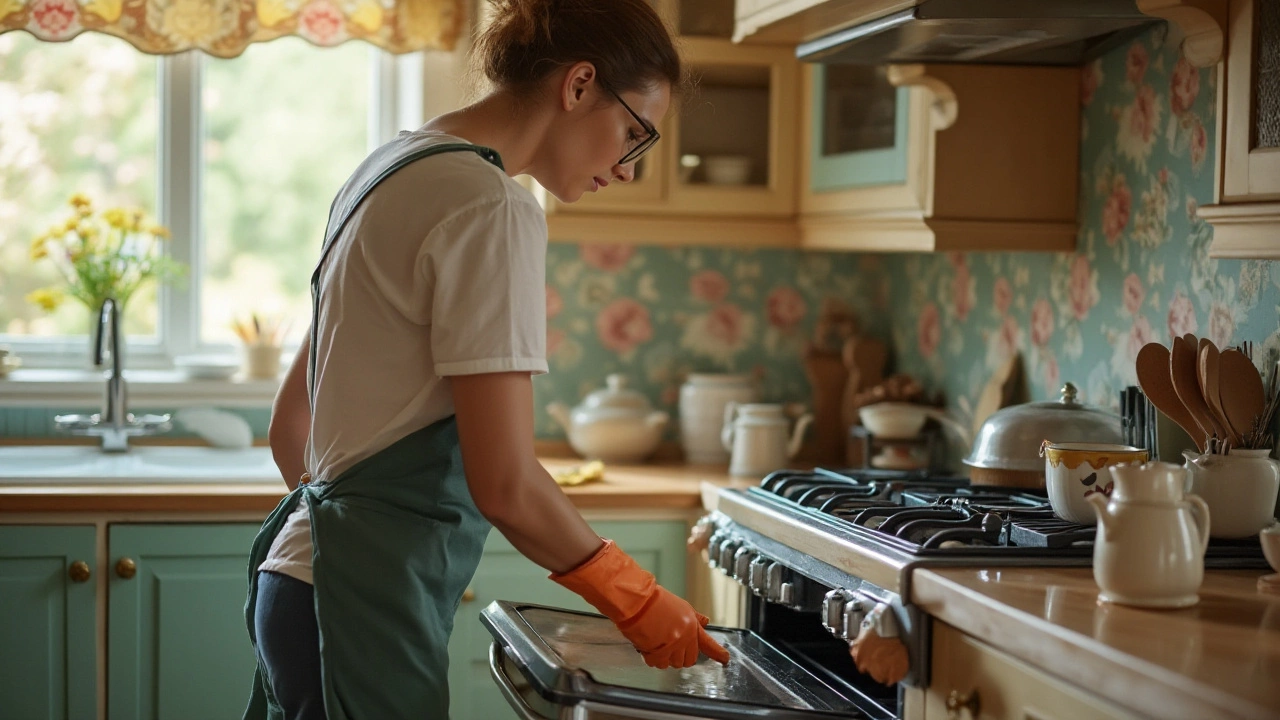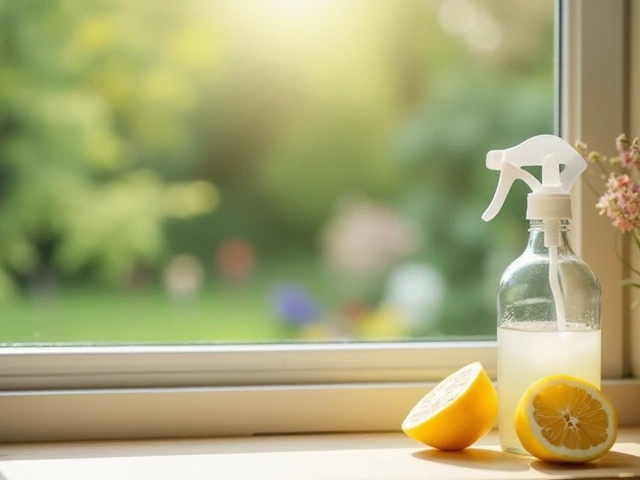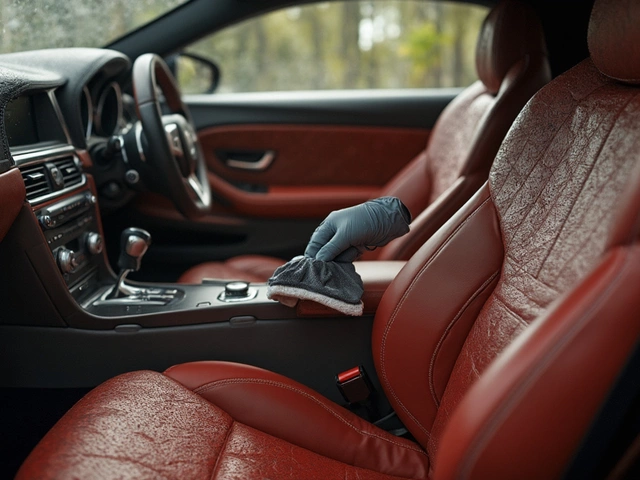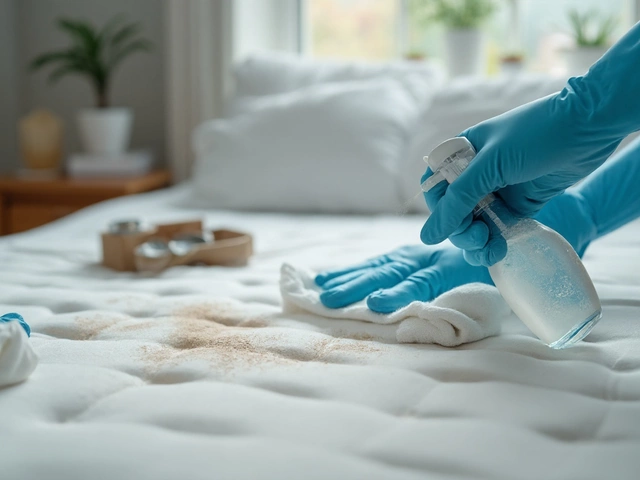There's a certain magic that professionals wield when it comes to cleaning ovens, making grime and grease seem to vanish into thin air. These experts rely on a combination of carefully selected tools, effective techniques, and years of experience to restore ovens to their sparkling glory. Understanding the process not only helps in maintaining a hygienic kitchen environment but can also extend the life of your appliance.
In this guide, we will explore every corner of the professional oven cleaning world, from the chosen arsenal of brushes, scrapers, and eco-friendly cleaning solutions, to the meticulous steps followed during the process. Whether you're aiming to tackle the task yourself or just curious about what sets a professional clean apart, these insights offer a practical view into the gleaming results often left behind by the experts.
- Tools and Supplies Used by Professionals
- Step-by-Step Cleaning Process
- Safety Measures and Eco-Friendly Practices
- Maintenance Tips for Prolonged Cleanliness
Tools and Supplies Used by Professionals
When it comes to getting that perfect shine on an oven, professionals turn to a trusted toolkit designed specifically for this challenging task. They don't just grab any sponge or soap—they use industrial-grade supplies that are capable of cutting through the toughest grease layers. Among the most notable tools is the heavy-duty scraper, which is crucial for tackling baked-on grime that can accumulate over months of use. These scrapers, often made of stainless steel, allow for precise removal without scratching the oven's surface. Additionally, experts favor the use of nylon scouring pads, which offer the grit needed to eliminate residues without damaging sensitive components inside the oven.
Equipped with these tools, professionals also depend heavily on specific cleaning solutions. Many opt for environmentally friendly, non-toxic cleaners that promise the effectiveness of chemical alternatives without the harmful side effects. These products not only break down grease particles but also leave a pleasant aroma, which is a welcome change from the pungent smells of traditional cleaning agents. It's not uncommon for professionals to use specialized alkaline detergents, either, due to their incredible ability to saponify fats and oils, transforming them into soap and glycerin that can be easily wiped away.
One of the things that separates professional cleaners from occasional DIYers is their use of steam cleaning devices. A steam cleaner harnesses the power of high temperature and pressure to melt away tough residues, making for an efficient and effective cleaning process. These machines are particularly appreciated by professionals for their capability to sanitize as they clean, ensuring a hygienic cooking environment once the job is done. Some professionals prefer steam cleaners that allow for adjustable pressure settings, offering precision especially when working in narrower spaces within the oven.
In an insightful interview with a reputable oven cleaning specialist, John Oliver, he shared,
"The key to effective oven cleaning lies not just in the tools, but in understanding how and when to use them. Combining the right tools with patience can transform a cleaning task into an art form, ensuring every hidden spot is spotless."This philosophy is why professionals also carry a selection of brushes with varying bristle stiffness. Whether it's a soft-bristled brush for gentle dusting or a wire brush for those stubborn oven racks, each brush has a specific purpose and ensures nothing gets overlooked during the cleaning process.
Here is a table highlighting some popular tools used by professionals:
| Tool | Purpose |
|---|---|
| Heavy-Duty Scraper | Removing baked-on grime |
| Nylon Scouring Pads | Eliminating residues safely |
| Steam Cleaner | Melting tough residues and sanitizing |
| Alkaline Detergents | Breaking down grease effectively |
| Diverse Brushes | Addressing different cleaning needs |
Combining these tools with proper technique not only speeds up the process but also ensures a lasting, radiant clean. After all the scrubbing and spraying, professionals use microfiber cloths to lend the final touch. These cloths are known for their superior absorbency and ability to trap any remaining dust or dirt, creating a pristine look that's hard to achieve from mere DIY efforts. Indeed, each item in a professional cleaner’s kit has been chosen for a reason, working in harmony to tackle every conceivable aspect of oven cleaning.
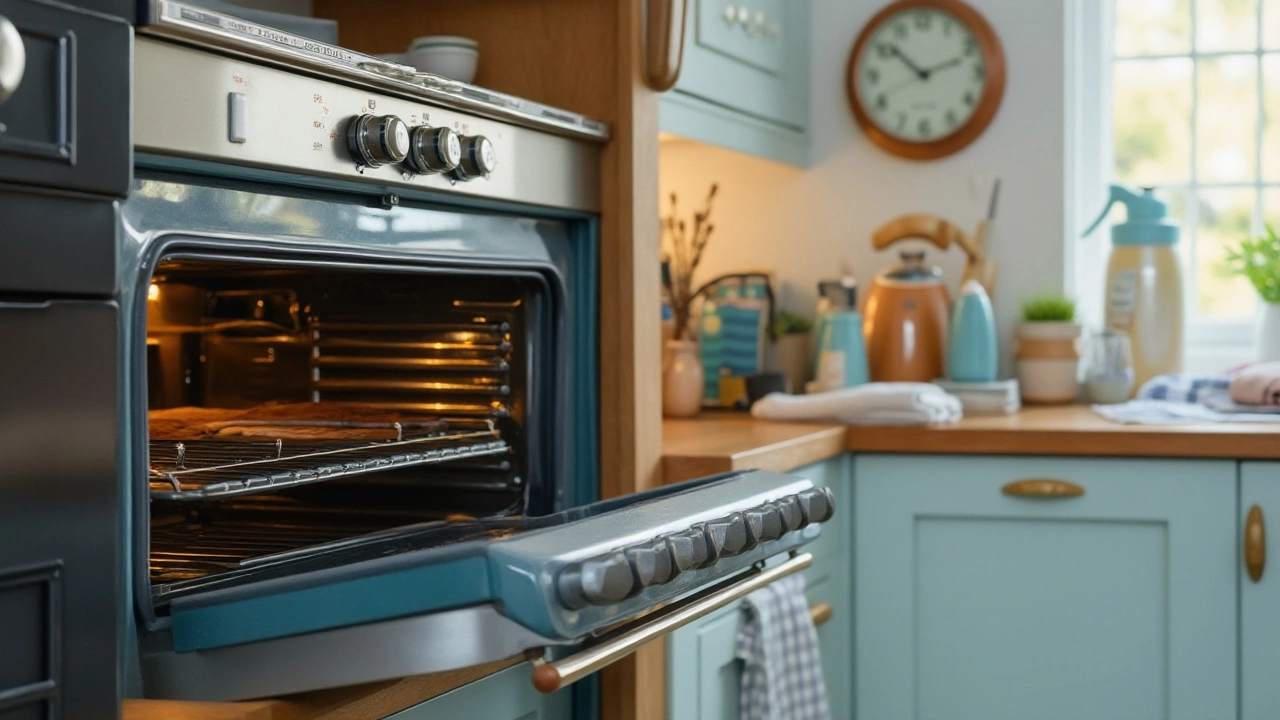
Step-by-Step Cleaning Process
The art of professional oven cleaning is a finely-tuned process, honed over years of practice to achieve efficiency and impeccable cleanliness. This process starts with gathering specific tools and supplies that are pivotal for tackling even the toughest oven grime. Professionals rarely work without their trusty set of brushes, scrapers, and non-toxic cleaning solutions, ensuring that every corner of the oven is addressed. These tools are not just any household items; they are specially designed to reach into the nooks and crannies, providing a comprehensive clean that's both thorough and safe for everyday use.
Step one in this meticulous process involves a preliminary inspection of the appliance. Here, professionals assess the level of dirt and the types of materials they will be dealing with. Is the oven lined with stubborn carbon deposits, or is it mainly surface grease that needs lifting? This evaluation helps in determining the right approach and choosing the suitable cleaning solution. With this groundwork laid, the journey to a sparkling oven begins.
Unveiling the Essentials
The actual cleaning process unfolds methodically. Initially, the interior shelves and trays are removed to be cleaned separately; this allows the focus to remain solely on the oven's interior. Next, a liberal application of the cleaning solution is sprayed or applied, making sure that every inch of the interior receives treatment. This solution is designed to break down the oils and carbonized buildup, starting the cleansing process. It's fascinating how certain eco-friendly solutions are just as effective as the more chemical-heavy counterparts. According to
Eco Clean Solutions, "Using environmentally friendly solutions promotes not only a safer clean but maintains the oven's finish over time."Such insights reflect the industry's shift toward greener, more sustainable practices.
Once applied, the cleaning solution is left to sit for an optimal period, allowing the active ingredients to work their magic. This soaking phase is critical, as it targets the most resilient stains, loosening them for the next stage—scrubbing. The professionals' technique here is all about the balance; employing enough elbow grease to remove grime without damaging the oven's surfaces. Special attention is paid to corners and seals, ensuring nothing is left untouched.
The Final Polish
After the grime has been meticulously scrubbed away, it's time for a thorough rinse and dry. This step is crucial in ensuring no residue from the cleaning products lingers, as remnants can compromise the foods cooked thereafter. Professionals use soft, lint-free cloths or specialized wiping tools to dry the surfaces, giving the oven that glistening finish. Shelves and trays receive their separate cleaning session, often involving a hot soapy soak followed by similar scrubbing and drying. Once done, they're placed back, and it's time for a final inspection.
The last check involves running the oven briefly to ensure no odors or residues are left from the cleaning process—a simple step that offers peace of mind. By following these measures, professional cleaning of an oven is not just about aesthetics but about maintaining functionality and food safety.
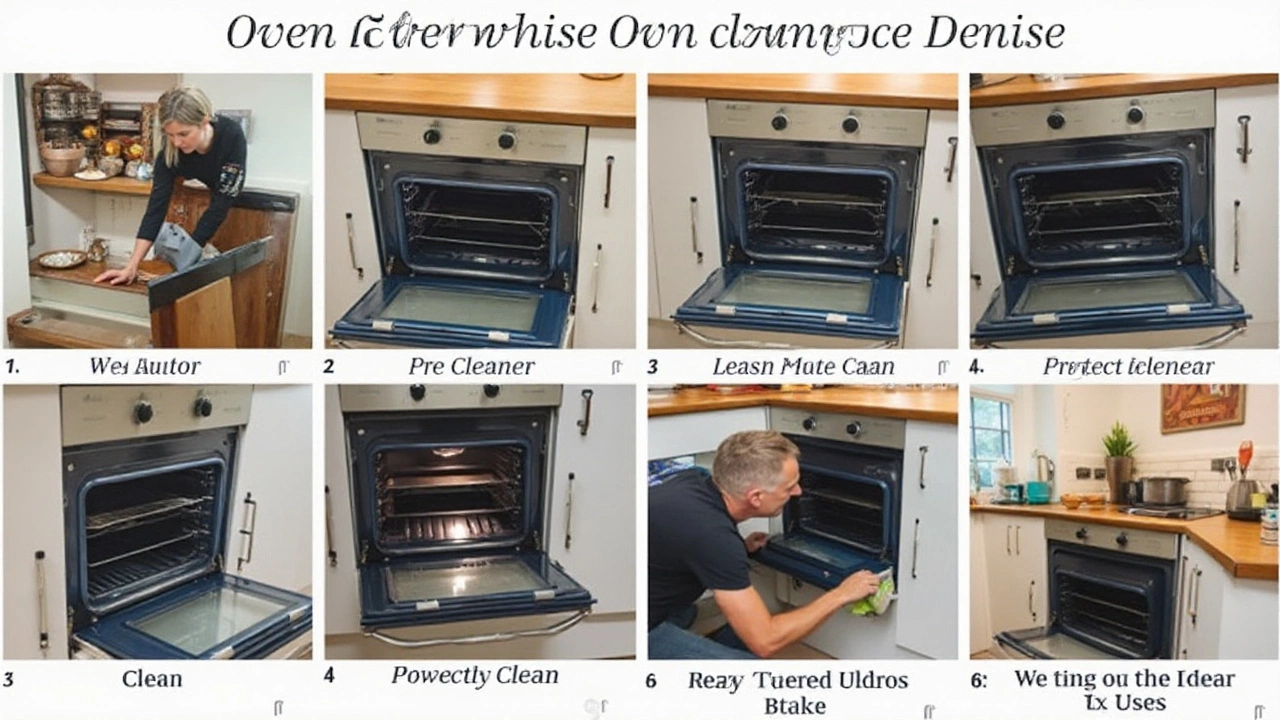
Safety Measures and Eco-Friendly Practices
When diving into the world of professional oven cleaning, safety and eco-consciousness are two pillars that uphold the entire process. While grease and grime are formidable foes, they must be tackled without compromising the health of the cleaner or the environment. The right approach begins with selecting non-toxic, biodegradable cleaning agents, which not only protect your health but are also gentle on our planet. This choice can help minimize the carbon footprint that typical cleaning supplies tend to leave behind. It's worth noting that many off-the-shelf cleaners contain harsh chemicals like caustic soda, which can be detrimental to both human health and nature. Adopting safer alternatives is an essential part of being a responsible cleaner.
Safety is a priority during the cleaning process itself, starting with the importance of wearing protective gear. Professionals don gloves, masks, and sometimes even goggles, ensuring they avoid direct contact with any residue or cleaner, even if it's non-toxic. The practice of ventilating the area is equally crucial. By opening windows or utilizing exhaust fans, one can disperse fumes efficiently. This step is paramount when cleaning an oven because inhaling any form of cleaner—even eco-friendly ones—can cause discomfort. Ensuring that these measures are in place can significantly reduce any associated risks, transforming the cleaning session into a worry-free task.
Moreover, eco-friendly practices also encompass waste management. After the intense cleaning session, it is essential to dispose of any materials such as cloths or paper towels responsibly. For instance, those used in the process should ideally be sent to a composting facility rather than a landfill. Not only does this reduce waste, but it also contributes positively to the environment by returning organic content back to the earth. Many professionals advocate for these measures as part of a broader sustainability initiative. According to Green Seal, "A cleaner planet starts with conscious cleaning practices, right from our homes." This quote perfectly encapsulates the notion that even a simple task like cleaning an oven can have far-reaching effects on our surroundings when done correctly. Therefore, integrating these safety measures and eco-friendly practices isn't just about cleaning an appliance—it’s a step towards a cleaner, healthier planet.

Maintenance Tips for Prolonged Cleanliness
When it comes to maintaining a pristine oven, consistency is key. A regular cleaning schedule, paired with some handy habits, can keep grimestorms at bay. First, consider using a liner or tray to catch food drips when cooking, as these can burn and contribute to unpleasant odors. Oven cleaning doesn't have to be a monumental task if you stay on top of it routinely—a quick wipe down after spills can make a world of difference. Imagine a few crumbs falling unnoticed into the depths of your appliance; if left unchecked, they form the foundation of stubborn buildup that professionals must then banish with their magic touch.
One simple trick is to give your oven a quick vacuum once a month. Yes, you heard it right! Using an attachment nozzle, you can suck up any debris from the bottom. It's a simple step that prevents finer particles from baking onto surfaces. Also, try to avoid using aluminum foil directly on oven racks, as it can block heat circulation, resulting in uneven cooking and potential spills. Instead, regular cleaning of these racks can keep everything running smoothly. A gentle scrub with some warm, soapy water usually does the trick, erasing minor stains that can become bothersome over time.
Equally vital is to keep the exterior clean. A layer of dust might seem harmless, but over time it mixes with kitchen grease, creating a film on knobs and handles. Regularly wipe these areas with a mixture of vinegar and water, which acts as a mild disinfectant and degreaser. Simply spraying and wiping down the control panel can prevent any display malfunctions caused by dirt accumulation. Remember, using non-abrasive cloths or sponges ensures you won't scratch surfaces while maintaining that professional shine.
Let’s not forget the importance of ventilation! An oven's built-in fans, if clogged by grease, can diminish efficiency and increase the risk of overheating. Cleaning these components might seem daunting, but many are designed for easy removal. Check your oven manual to see if your model allows for this, or consult with a professional if any doubt remains. Keeping these parts clean helps maintain an oven's longevity, and in the end, a healthy appliance means less frequent need for professional cleaning.
“Regular maintenance of household appliances prevents costly repairs and boosts their efficiency. A stitch in time saves nine, as they say.” — Home Appliance Maintenance Guide
Lastly, always check door seals and gaskets. They’re not often in the spotlight, but these unsung heroes ensure that the heat stays inside, which is essential for both cooking performance and energy efficiency. To test their effectiveness, close the oven door on a piece of paper. If you can pull it out easily, it's likely time to replace the seal. Keeping an eye on these small details lets you keep surprise costs at bay and ensures your oven stays in tip-top shape, ready for any baking task you throw at it.
